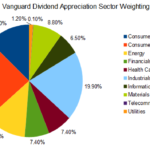There’s an intriguing anomaly forming between two gold exchange traded products that should, in concept track virtually simultaneously with the spot price of gold bullion save for minor fluctuations in NAV and management fee differences. While (GLD) is most familiar to many retail investors looking to mimic changes in the price of gold bullion, there are some who believe if there were actually a demand of delivery of the physical gold the holding company purports to have on hand, they couldn’t deliver. At a high level, that’s true of the entire US banking system. When banks are leveraged 30-1, if all depositors simultaneously demanded liquidation of their accounts, the entire system would become insolvent. That’s why the the FDIC was so vocal during the financial crisis in stressing that a) no investor had ever lost a dollar in an FDIC-insured account and b) they raised account limits temporarily given the new reality that many accounts well exceeded $100,000. Within the prospectus for GLD, there are also various risks highlighted that may cause discomfort for investors. I’m not drawing any parallels between FDIC insurance and GLD other than to highlight investor comfort level – there is not such government assurance related to GLD.
That’s where the physical gold trust comes in. The Sprott Physical Gold Trust (PHYS) is a closed-end fund that actually allows for physical delivery of gold bars to investors in the trust on demand. While this entails considerable cost, hassle and security considerations, the mere notion that you can take custody of the gold that you believe you hold in shares of the trust provides a comfort to investors that the other ETFs and ETNs can’t.
Premium to NAV
As is common with closed-end funds though, PHYS can trade at a discount or premium to the underlying net asset value (NAV) of the holdings. In recent days, an odd anomaly has occurred. The premium to NAV has spiked, which is worthy of concern for any particular closed-end fund in and of itself, not to mention that fact that there is now a pronounced divergence between the performance of GLD vs. PHYS.
What Could Explain This Divergence?
It stands to reason that PHYS would always and will always trade at a reasonable premium to the underlying NAV given the fact that it provides (at least psychologically) a higher level of comfort than the true underlying assets given the gold delivery option. In a review of recent historical premiums, they had typically been in the range of anywhere from 6-13%. While even this may seem high, this had been the historical norm. Today, the premium to NAV spiked to over 30% at one point, but it still settled at over 20%. So, not only does this represent a substantial spike in premium, but note the runup in the share price of PHYS vs. GLD of late:
While there had always been some decent outperformance as gold was rising since inception in March, since the European panic ensued last week, is it possible that investors are more skittish and fearful that the value in GLD may not exist when the time comes to redeem their shares? From May 6 to May 7 alone, while GLD rose a paltry 2.8% , PHYS rose an astounding 11%. Bear in mind that aside from the provision to take custody of gold, there are no other major differences in these investments. They are both meant to return the change in value of gold bullion over time – no other precious metals, no operational risk from mining companies, etc. During the session on May 10, PHYS started to return to parity after hitting that 30% premium and the total return for each on the day actually showed the trend reversing with GLD losing 0.5% while PHYS lost 1.5%.
This begs the following questions:
a) Is PHYS ripe for a pairs trade with GLD? As investor nerves are calmed following last week’s volatility trade, by shorting PHYS and going long GLD, as the premium returns to normal, regardless of what gold does, it’s a free ride – IF the premium declines back to recent levels closer to 10%.
b) Are investors in PHYS really onto something? Is there a run on GLD brewing (perhaps, a massive outflow of funds from GLD and into PHYS)?
Or is it something else? Continued increases in premium to NAV are clearly unsustainable; the question is just how high the premium will go, but it obviously can’t go on forever. At some point, it just makes more sense to go out and buy gold bars yourself and stash them in a safe instead of paying 30%, 40% or higher premiums for a holding company to retain possession. So, the question is what is driving this phenomema and how long it will last.
If considering any gold investment, make sure you understand the gold tax rate treatment on various ETFs and ETNs before proceeding since there are multiple considerations which may sway you one way or the other.
Disclosure: Author entered into a pairs trade on May 10, 2010 – long GLD/Short PHYS equivalent amount.










{ 1 comment… read it below or add one }
I’ve been watching PHYS trade since it was listed and have been looking at it for a similar pair trade. Another angle to consider: What do you think about spreading PHYS against funds CEF or GTU, which also hold physical gold in trusts (though, to my knowledge, they lack a PHYS-like redemption mechanism)? Right now both GTU and CEF are trading at ~10% premium to NAV.
{ 6 trackbacks }